Do you want to be a better shooter? Of course, we all do.
Instead of reinventing the wheel yourself, we recommend putting your skills to the test with the best military and police qualifying shoots.
These courses of fire are great for training, measuring progress, and seeing actual results.
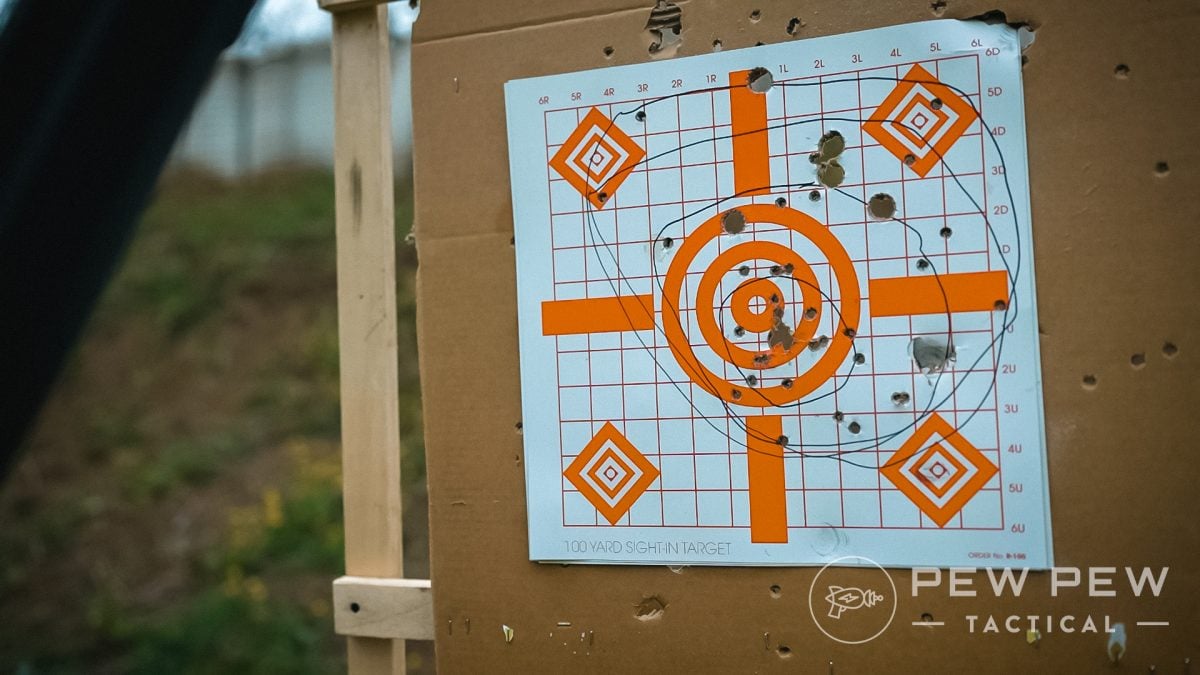
Today, we’re going to look at some of the most effective — and realistic — qualifying shoots used or created by professional gunslingers.
Table of Contents
Loading…
Military & Police Qualifying Shoot Comparison Chart
| Firearm | Skills Emphasized | Distance | Round Count | |
| Federal Air Marshals | Pistol | Drawing from concealment, rapid fire, reloading | 7 yds | 30 |
| USMC MEU(SOC) | Carbine | Movement, positions | 3 – 50 yds | 50 |
| Maine Criminal Justice Academy | Pistol | Small handguns, movement, using cover | 3 – 18 yds | 50 |
| Department of Energy Protective Force | Shotgun | Reloading, positions | 7 – 25 yds | 10 |
How We Chose the Best Military & Police Qualifying Shoots
There are a lot of good qualifications out there, but we picked four that we think offer the most training value to the average civilian gun owner.
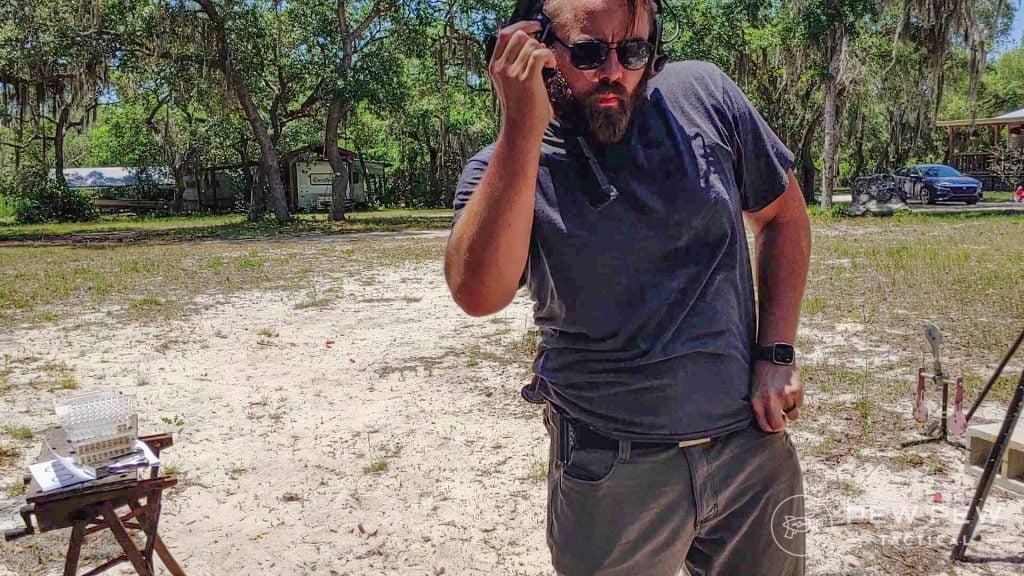
First, we made sure to cover a variety of firearms. Whether you want to get better with a pistol, AR-15, or tactical shotgun, there’s something here for you.
We also considered skills beyond putting shots on target. In addition to accuracy, we wanted to train things like reloads, movement, and seeking cover.
You probably don’t have access to a super advanced professional training facility like service members and law enforcement officers have, so we tried to keep things attainable. There are no night vision goggles or belt-fed weapons this time around, just attainable skills you can work on with what you’ve got.
Best Military & Police Qualifying Shoots
1. Federal Air Marshals – Best Handgun Qualifying Shoot
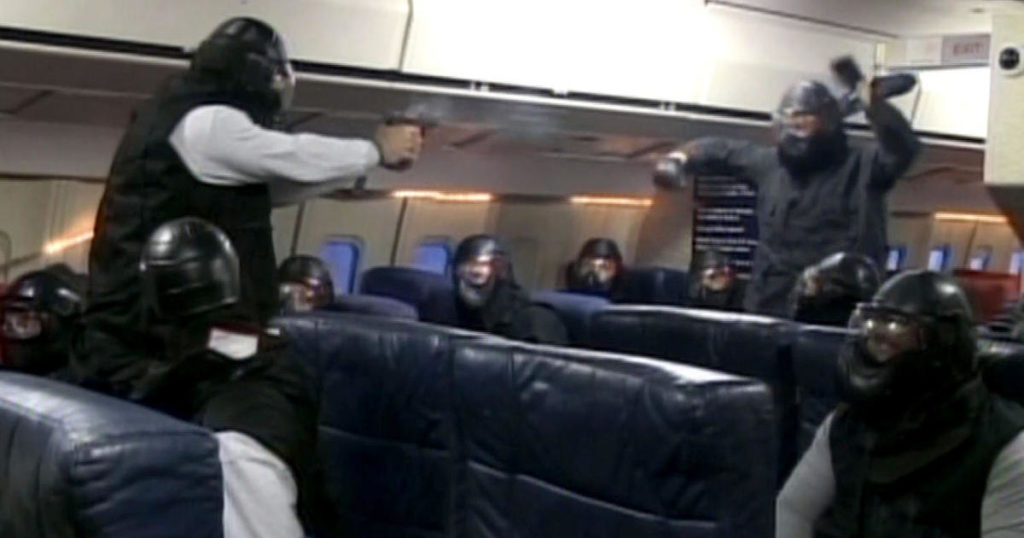
The Federal Air Marshals are the first and last line of defense on a commercial airplane.
They face situations very similar to civilian self-defense, as most shootings happen at close range and are over very fast.
Air Marshals must be extremely accurate to avoid hitting any innocent passengers, so their qualifying shoot stresses accuracy and speed.
For this, you’ll need one target, two magazines, and at least 30 rounds.
Prices accurate at time of writing
Prices accurate at time of writing
-
25% off all OAKLEY products - OAKLEY25
Copied! Visit Merchant
| Procedure | Starting Position | Time Allowed | Total Shots |
Reps |
| Fire 1 Round | Concealment | 3.3 Seconds | 2 | 2 |
| Double Tap | Low Ready | 2.7 seconds | 4 | 2 |
| 6 Aimed Rounds | Low Ready | 3.00 Seconds | 6 | 1 |
| Shoot 1 round, Reload, Shoot 1 round | Low Ready | 6.5 Seconds | 4 | 2 |
| 1 round at 2 targets, Targets three yards apart | Low Ready | 3.30 Seconds | 4 | 2 |
| 180 Degree pivot. 1 shot on three targets, left to right. | From Concealment | 7.00 seconds | 6 | 2 |
| Fire 1 round, slide locks, transition to knee and reload, fire 1 more round | Low Ready | 8.00 Seconds | 4 | 2 |
Notes
- The drills with multiple strings must be done under the total time. Per round time is an average, or split time. For example, Drill 1 can be fired with one string of 2 seconds, and a second string of 1.3 seconds and still qualify.
- The target is an FBI Q target at 7 yards.
- Shots inside the bottle are 5 points, shot’s outside are two points. 30 shots fired, a max score of 150, a passing score is 135.
- Issued Weapon to Federal Air Marshals is the P229 in 357 Sig.
Why It’s Effective
This drill has one awesome feature and one not so awesome feature. The awesome feature is the focus on concealed shooting.
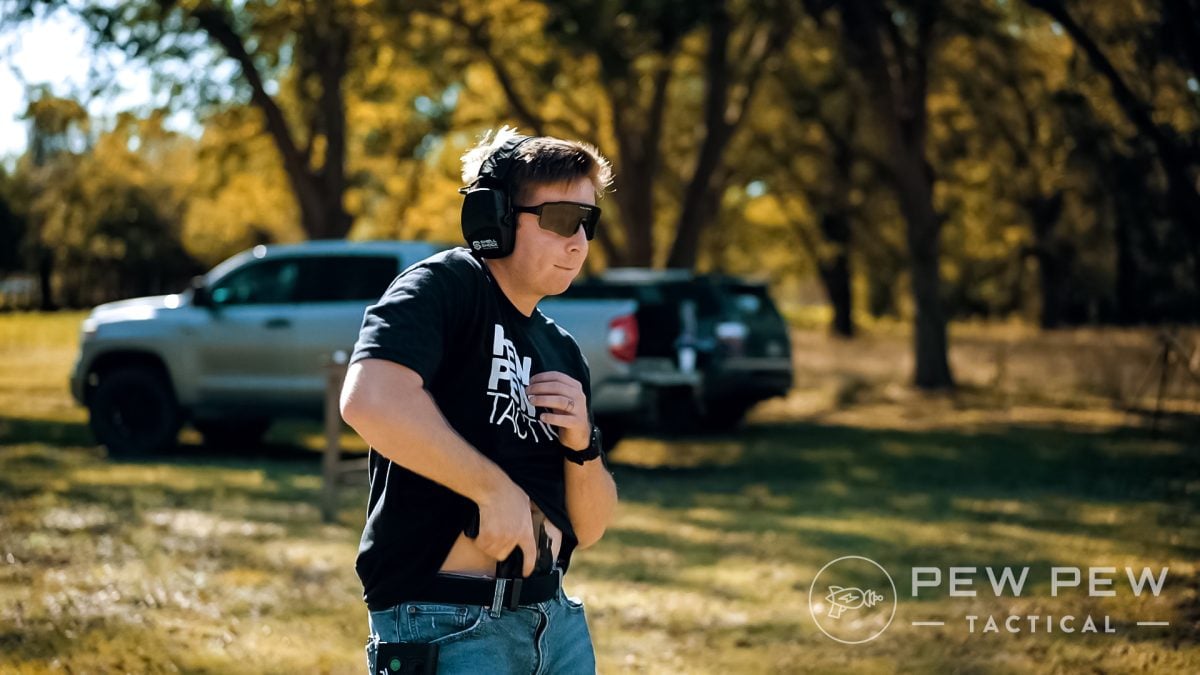
Many police and military qualifications have no focus on shooting from concealed. Since Air Marshals look and act as normal civilians on flights, they train and focus on shooting from concealed.
The not-so-awesome is the lack of focus on getting off the X and finding cover.
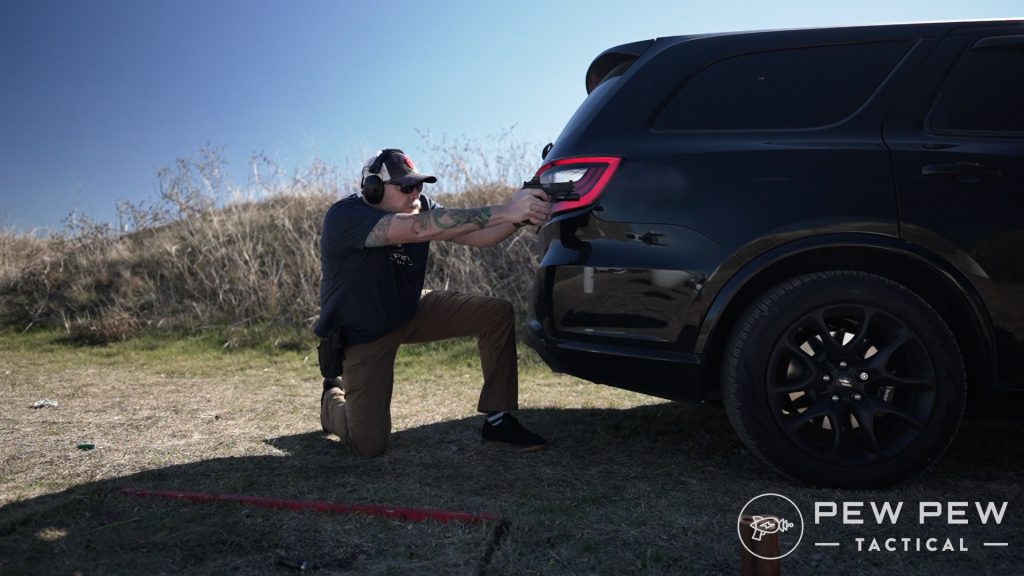
In an airplane, there isn’t much cover or room to move, so it makes sense this isn’t an issue for them. For the everyday concealed carrier, the use of cover and the ability to get off the X is important. However, the transition from standing to a knee and reloading is a valuable skill to have, as well as pivoting and engaging.
Additional Thoughts
I do like how they implement the 6 accurate rounds in 3 seconds.
The reason being that sometimes a double tap just doesn’t do it. You may need to shoot an opponent six times. Training for more than two accurate shots on a target prevents building a two shots is enough mentality and habit.
Prices accurate at time of writing
Prices accurate at time of writing
-
25% off all OAKLEY products - OAKLEY25
Copied! Visit Merchant
Need help selecting your first handgun? Check out our beginner’s guide.
2. MEU(SOC) – Best Carbine Qualifying Shoot
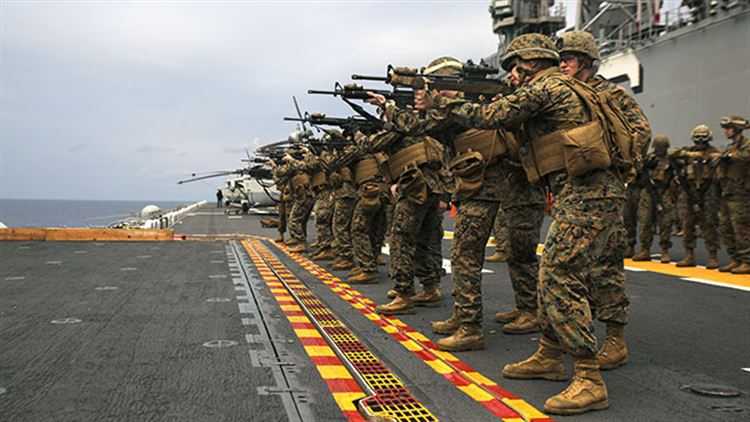
MEU (SOC) or Marine Expeditionary Unit, Special Operations Qualified, are Marine units deployed at sea.
They are tasked with traveling the world and being the world’s 911 force. Naturally, MEU(SOC) deployments are always dynamic.
My second deployment was a MEU(SOC) unit and the training is intense.
Infantry Marines must pass a variety of different training packages with the Special Operation Training Group before they deploy.
The rifle skills package is dynamic, varied, and some of the best training I ever received.
-
25% off all OAKLEY products - OAKLEY25
Copied! Visit Merchant
For this qualification, you’ll need one target, two magazines, and 50 rounds. Begin Phase One with a magazine of 28 rounds, with a magazine of 22 rounds on standby).
| Distance | Procedure | Shots Fired | Time Allowed (seconds) |
| 50 Yards | 2 shots in each position Standing/Kneeling/Prone to body | 6 | 10 |
| 25 yards | Sprint 50 to 25 yards. 2 shots in each position Standing/Kneeling | 4 | 11 |
| 25 yards | Head Shot | 1 | 2 |
| 25-15 yards | Walk 25 to 15 fire 2 shots to body | 2 | 5 |
| 15 Yards | 2 shots to body, standing | 2 | 1.5 |
| 15-10 yards | Walk 15 to 10 Failure to stop drill* | 3 | 4 |
| 10-5 yards | Walk 10 to 5 Failure to stop drill* | 3 | 3.5 |
| 7-3 yards | Walk 7 to 3 Failure to stop drill | 3 | 3 |
Tally up your score before moving to Phase Two.
Shots in the designated head, chest, and pelvis are worth two points. Other shots on target are worth one point. Misses are worth zero points. Phase One involves 24 shots fired, for a max score of 48 points.
Phase Two involves two targets. You should have 4 rounds left after Phase One (three in the magazine, and one in the chamber).
| Distance | Procedure | Shots Fired | Time Allowed (seconds) |
| 50 Yards | 2 shots standing to body of target one, Reload, 2 shots kneeling on target two |
4 | 11 |
| 25-15 yards | Shooting on the move. 2 shots each body | 4 | 6 |
| 15 Yards | 2 shots to bodies of each target | 4 | 3.5 |
| 15-10 yards | Walk 15 to 10 2 shots to the body of each target | 4 | 4 |
| 10 Yards | 2 shots to the body of each target | 4 | 3 |
| 10-3 Yards | Walk 10-3. Hammer pair to body of each target, followed by single shot to brain of each target. | 6 | 5 |
Score your targets from Phase Two; scoring is the same. Both phases combine for a total of 100 points, with a minimum score of 80 required to pass.
Notes
- A failure to stop drill is two shots to the chest and one shot to the head or pelvis (shooter’s discretion).
- A hammer pair is two shots from one sight picture, otherwise known as a double-tap.
- The Marine Corps uses E-Type Facer targets, but you can substitute any silhouette target with marked head, chest, and pelvic areas.
Why It’s Effective
This is an excellent carbine drill all around. It mixes shooting with movement, and demands precision.
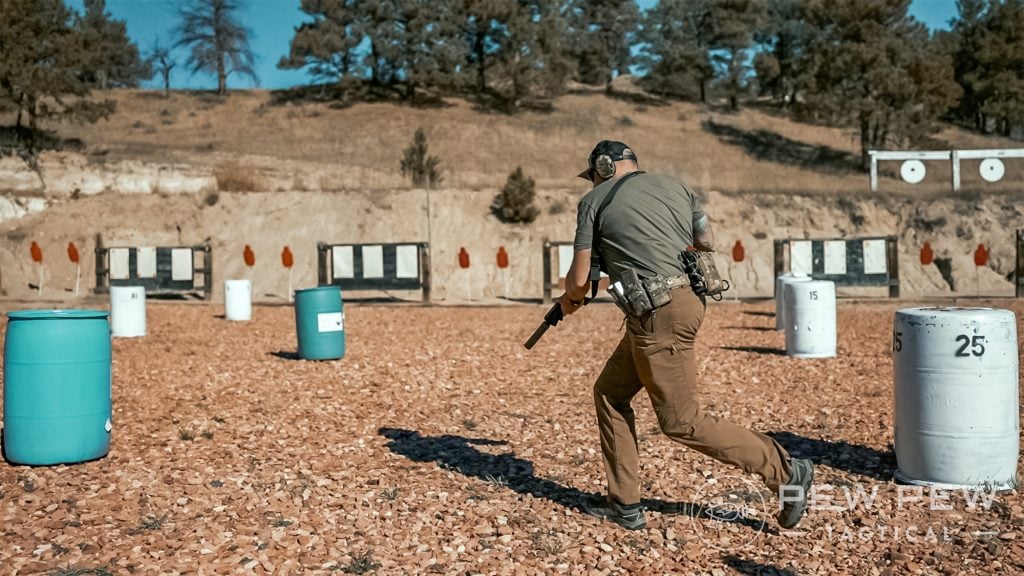
It is not an easy drill and it’s designed to keep you moving. That 25-yard sprint wakes you up and gets the heart pounding. To make it extra realistic, toss on a plate carrier and some plates.
The qualification puts a lot of stress on shot placement, which is the most effective fight stopper.
There is also movement, transitions between standing, kneeling, and prone positions, and a forced reload.
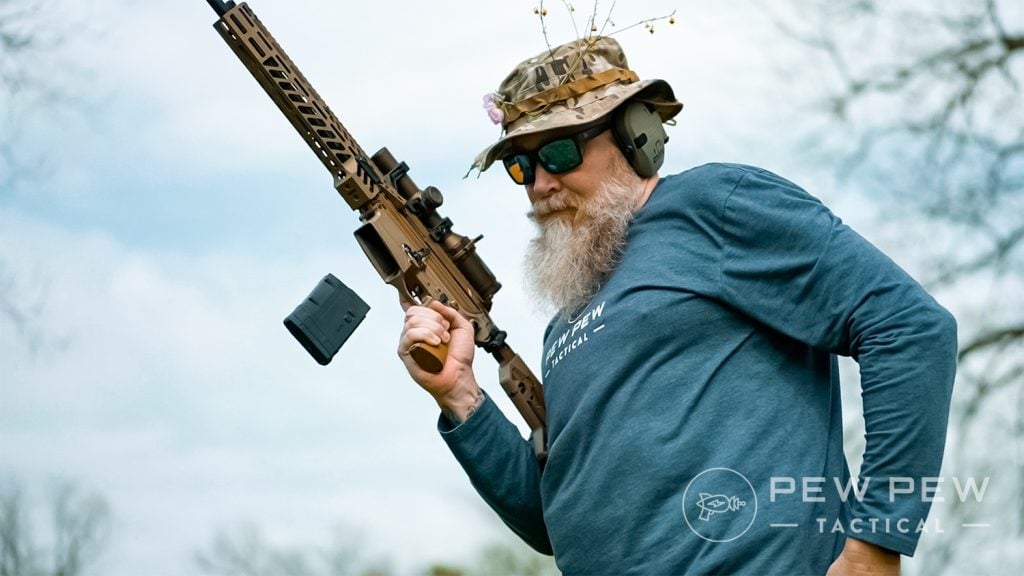
This qualification really stresses the fundamentals of shooting. If you can conquer this drill, you have a solid foundation in shooting a carbine.
One downside to the qualification is there is only one reload. Another is the fact it may be hard to find a range that allows you to run from the 50-yard line to the 25-yard line.
Prices accurate at time of writing
Prices accurate at time of writing
-
25% off all OAKLEY products - OAKLEY25
Copied! Visit Merchant
3. Maine Criminal Justice Academy – Best Backup Pistol Qualification
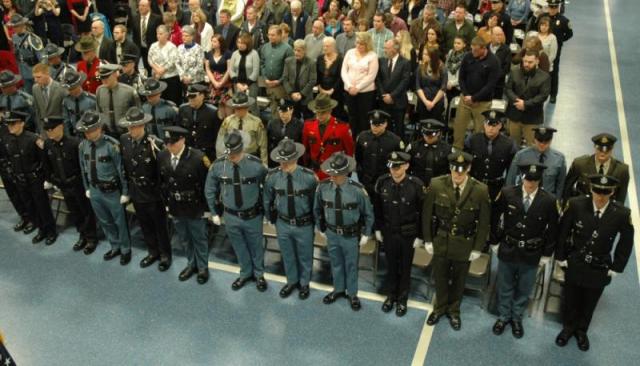
I can’t say I know a lot about the Maine Criminal Justice Academy, but I can say their plain clothes carry qualification is quite robust.
It’s designed for officers who carry a smaller-than-average weapon, which makes it an excellent course of fire for concealed carriers.
-
25% off all OAKLEY products - OAKLEY25
Copied! Visit Merchant
| Distance | Procedure | Shots Fired | Time Allotted (seconds) |
| 3 yards | 1 Round Standing (From Holster) | 1 | 2 |
| 3 yards | 2 Rounds Standing (From Holster) | 2 | 3 |
| 3 yards | 3 Rounds Standing (From Holster) | 3 | 3 |
| 5 yards | 2 rounds standing Controlled Pairs* (From Holster) Repeat Drill 3x |
2 per rep 6 total |
3 seconds per rep |
| 5 yards | 3 rounds, failure to stop drill* (From Holster) |
3 | 3 |
| 7 yards | 2 rounds standing Controlled Pairs* (From Holster) Repeat Drill 3x |
2 Per Rep 6 Total |
4 Seconds Per Rep |
| 7 yards | 3 rounds, failure to stop drill* (From Holster) |
3 | 3 |
| 10 yards | 3 rounds standing ( Ready Gun) |
3 | 3 |
| 10 Yards | 3 rounds, kneeling, failure to stop drill (Ready Gun) | 4 | 3 |
| 12 yards | 2 rounds, standing ( Ready Gun)Repeat Drill 2x |
2 per rep 4 total |
3 seconds per rep |
| 15 yards | Behind Barricade Standing Over 2 rounds, standing Transition to kneeling, fire 2 shots around barricade on strong side. |
4 | 10 |
| 18 yards | Start at 25 yards, draw firearm, move to 18 yard line with barricade with weapon ready. 2 rounds standing over barricade 2 rounds kneeling Right side barricade 2 Rounds kneeling Left side barricade |
6 rounds | 15 |
| 18 yards | (Drill requires Moderator to issue commands.) (Start with Ready Gun) Approach Target on Command – Low Ready Threat Command – High Ready and Verbalize ID and Command target to stop Fire Command – 3 shots center mass Stop, Command target to Back-Up – Low Ready Dress Line and Command to Back-Up – Ready Gun |
One shot equals one point. You’ll fire 50 shots in total, with a minimum score of 40 points to pass.
Notes
- A controlled pair uses one shot per sight picture. It’s a slow, repeatable pattern.
- A failure to stop drill is 2 shots to the torso and 1 shot to head.
Why It’s Effective
Many courses of fire and qualifications are difficult for small guns because of the capacity required. This one allows shooters with small concealed carry weapons to train and qualify without changing guns.
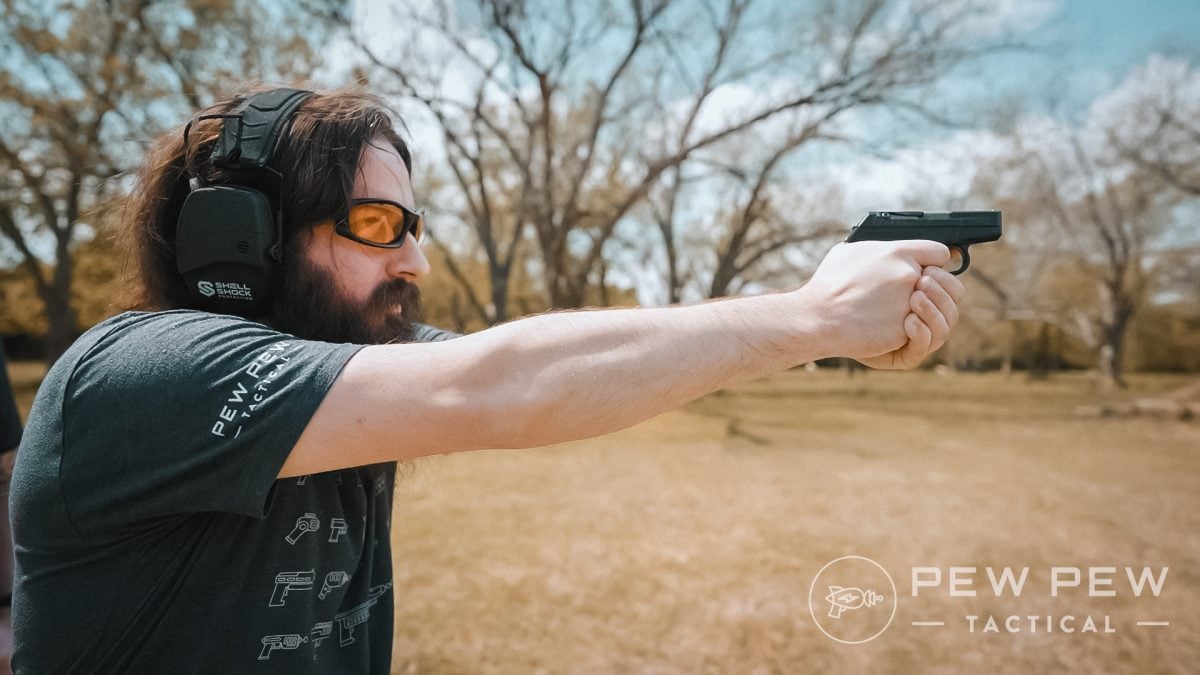
It doesn’t stress reloads, but many people carrying concealed don’t carry an extra magazine. Reloads could easily be worked into this course of fire if you do.
It does stress drawing and firing, as well as using cover.
Prices accurate at time of writing
Prices accurate at time of writing
-
25% off all OAKLEY products - OAKLEY25
Copied! Visit Merchant
There is also a move to cover portion that is extremely important in any gun fight. The last drill is complicated, but it allows a moderator to make you stop, issue commands, and tell you when to shoot.
The downside is that, for a small-gun course of fire, you have to have at least six rounds. Those who carry J frames will be forced to modify the drill down to five rounds.
Again, shooting and moving is usually prohibited at ranges.
5. Department of Energy Protective Force – Best Shotgun Qualifying Shoot
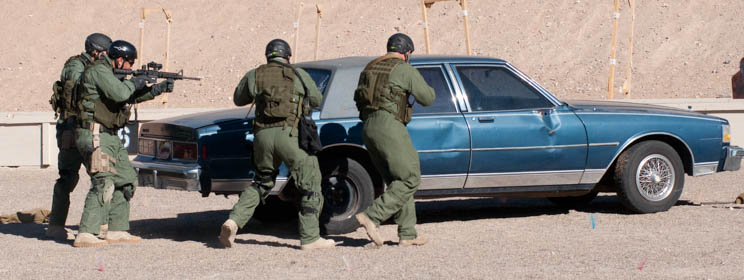
The Department of Energy Protective Force is in charge of guarding nuclear power plants throughout the United States.
It’s one of the best non-police, non-military armed units in the United States. They use a wide variety of weapons, including shotguns.
Scatterguns are excellent fight-stoppers, and the DOE trains some of the more important aspects of shotgun use.
-
25% off all OAKLEY products - OAKLEY25
Copied! Visit Merchant
| Distance | Procedure | Shots Fired | Time Allotted (seconds) |
| 7 yards | (Begin with an empty chamber, 3 rds in tube) Charge, and fire 2 rounds. Load 1 round in the magazine tube, and fire 2 rounds |
4 | 12 |
| 15 yards | (Begin with an empty chamber, 2 rds in tube)Charge, and fire 2 rounds from a standing position. While assuming the kneeling position, load 1 round through the ejection port and close the action, Load 1 round in the magazine tube, and fire 2 rounds |
4 | 15 |
| 25 yards | (Begin with an empty chamber, 2 rds in tube)Charge and fire 1 round from a standing position; kneel and fire 1 round | 2 | 6 |
If you use 9-pellet buckshot, you need to 63 hits for a score of 70% and instructors need to qualify with 72 hits for a score of 80%.
If you use 12-pellet buckshot, you’ll need 84 hits to pass and instructors will need 96 hits.
Prices accurate at time of writing
Prices accurate at time of writing
-
25% off all OAKLEY products - OAKLEY25
Copied! Visit Merchant
Why It’s Effective
The focus on combat and tactical reloads makes this an excellent course of fire.
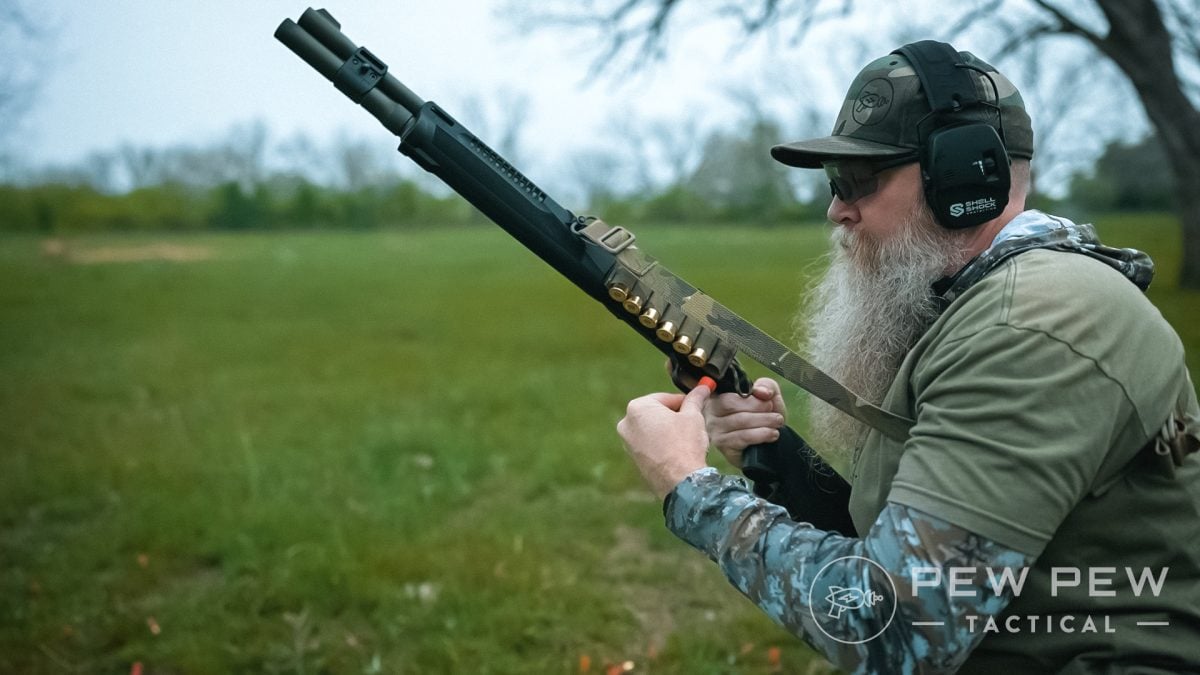
One of the keys to being good with a shotgun is being able to quickly reload. Magazine tubes only hold so many rounds.
This qualification involves strict time limits, and the 25 yard line makes you work for your score. The transitions to kneeling are an excellent touch that keeps you thinking.
The downside to this course of fire is that it’s a super short qualification. There isn’t a lot of focus on moving and shooting either. I’d also like to see the implementation of slugs. For some reason, shotgun qualifications are almost always all buckshot or all slugs.
Prices accurate at time of writing
Prices accurate at time of writing
-
25% off all OAKLEY products - OAKLEY25
Copied! Visit Merchant
If you haven’t tried shooting your shotgun with a red dot, that can give you a nice edge. This one works with any drilled and tapped receiver, and the optional multi-reticle is great for estimating pattern sizes at different distances.
How to Pick the Best Qualifying Shoot
So, which of these qualifications should you add to your training?
That’s easy — all of them!

These were created to evaluate professional shooters, but they also make for fantastic drills. Instead of showing up to the range with no plan, or running the same tired drills, try mixing it up with one of these each time you go.
That said, you can do yourself a favor by tailoring your training to your personal needs.
Lots of us here at Pew Pew Tactical carry concealed and keep a pistol close by for home defense. The Air Marshal and Maine Criminal Justice Academy qualifications work great for that.

If you have an AR-15, train like MEU Marines to shoot like the best.
If your home defense plan starts with 00 buckshot, hone your skills like the DOE. Maybe pick up a PSA Harrington & Richardson Retro DOE to complete the vibe.
Meet the Experts
Heading up this article is Pew Pew Tactical author Travis Pike. Travis spent a lifetime shooting and hunting before joining the United States Marine Corps, where he spent five years as an infantryman. Travis is also an NRA-certified instructor and concealed carry instructor in the state of Florida.
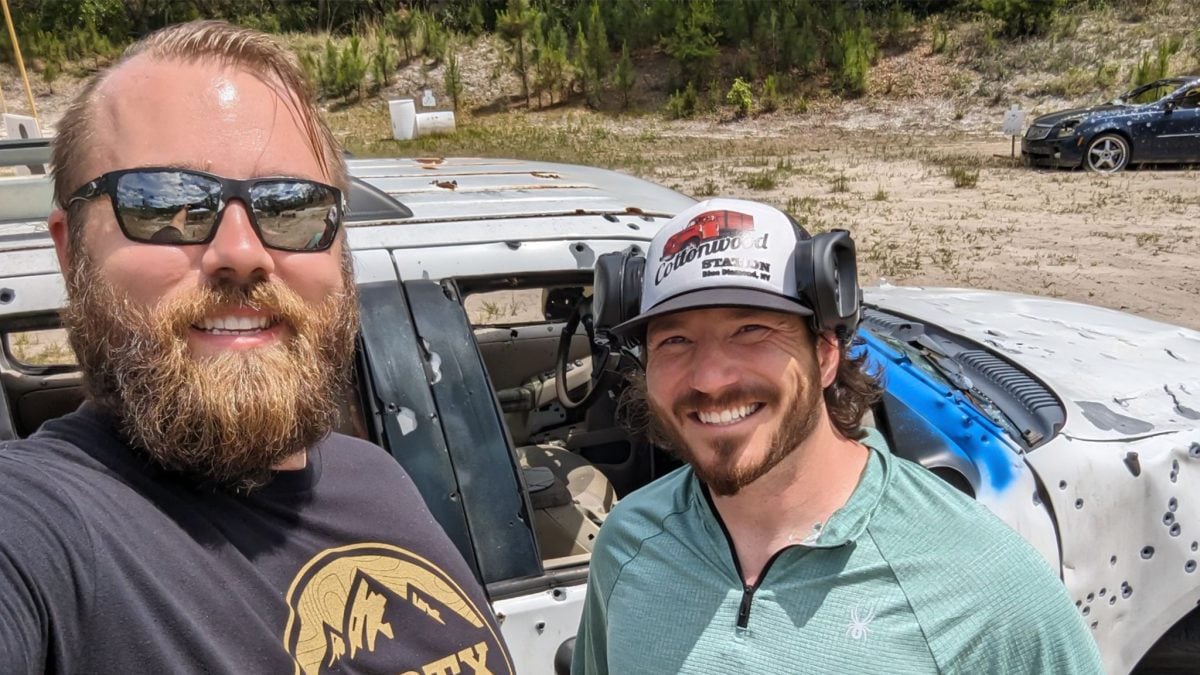
Editing this article is Scott Murdock. Scott is a Marine Corps veteran who competed and qualified as a rifle and pistol expert while in service. In addition to shooting, Scott has written for a variety of publications, testing, researching, and evaluating guns and gear. He brings that knowledge and skillset to this article, editing and fact-checking for accuracy.
Editor-in-Chief Jacki Billings runs our experienced team of reviewers. She is a National Rifle Association Basic Pistol Instructor as well as a member of the Society of Professional Journalists, ACES: Society for Editing, and the Professional Outdoor Media Association. Jacki has a bachelor’s degree in journalism and has worked as a media professional for close to 20 years, specializing in gun media for almost 10 years. With 2,000+ articles to her name, she uses her professional journalism and editing experience to set testing protocols and editorial standards for Pew Pew Tactical.
Final Thoughts
These quals give you a solid point to measure your shooting ability with a handgun, carbine, and shotgun.
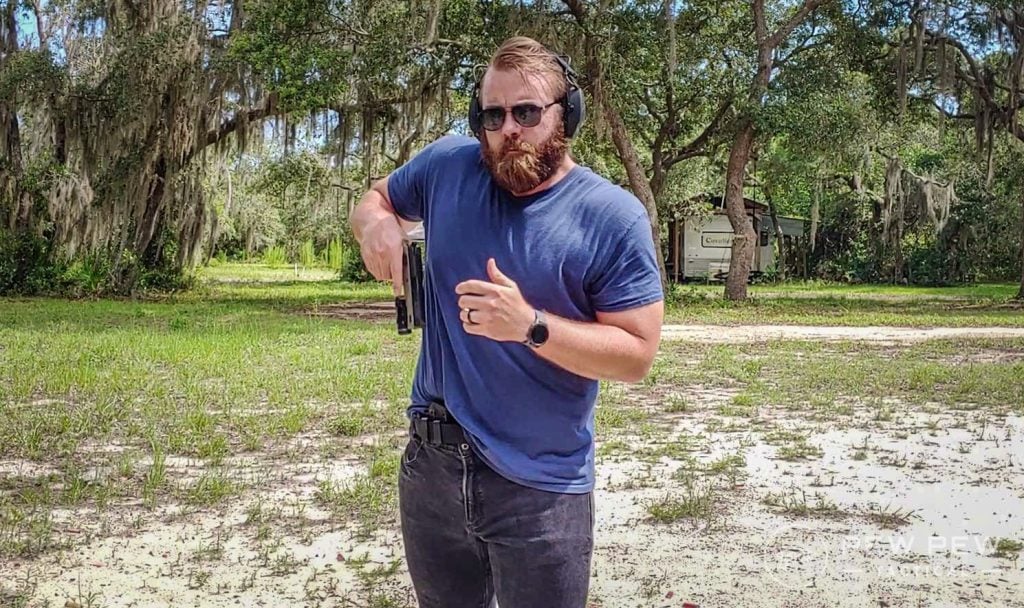
They‘re also budget-friendly in terms of the gear and ammunition you need to complete them.
Outside of giving you an objective skills assessment, they also provide valuable training to make you a faster, more accurate, and safer shooter.
Who doesn’t want that?
Latest Updates
June 2025: Updated formatting and supporting content.

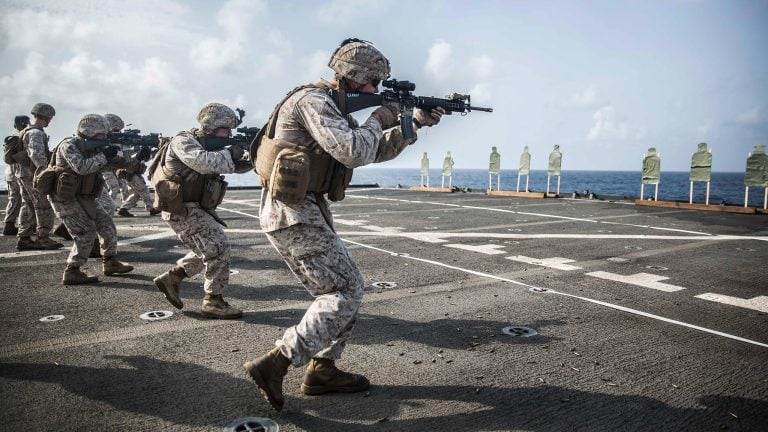



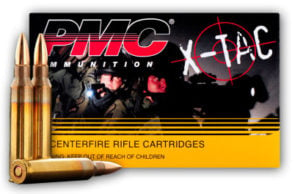



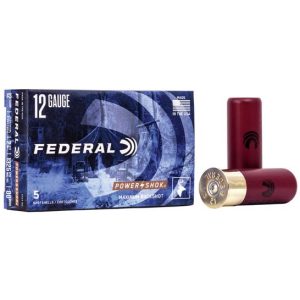

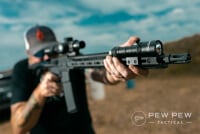
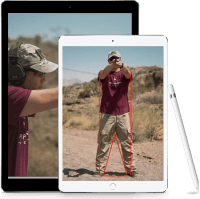


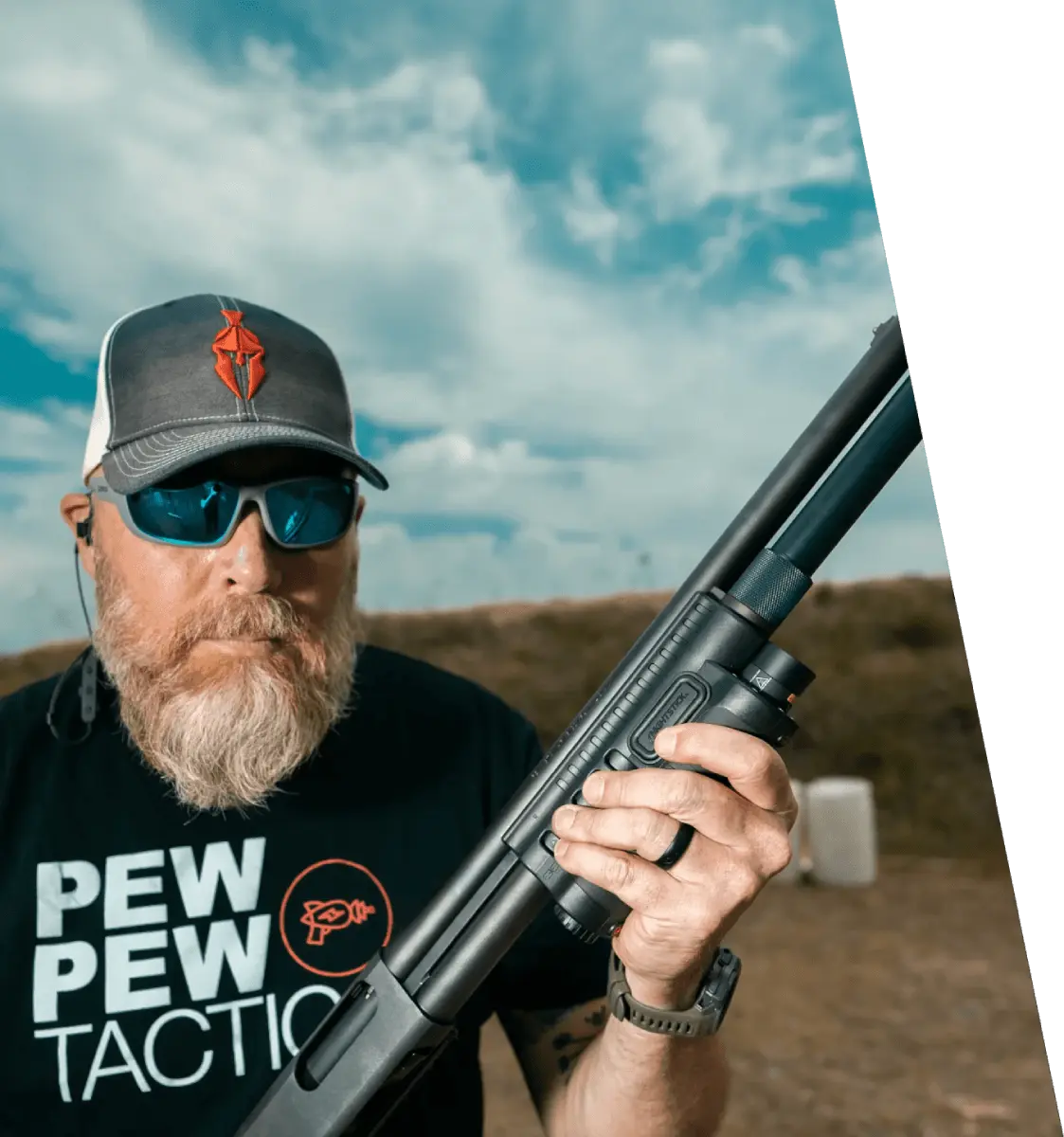

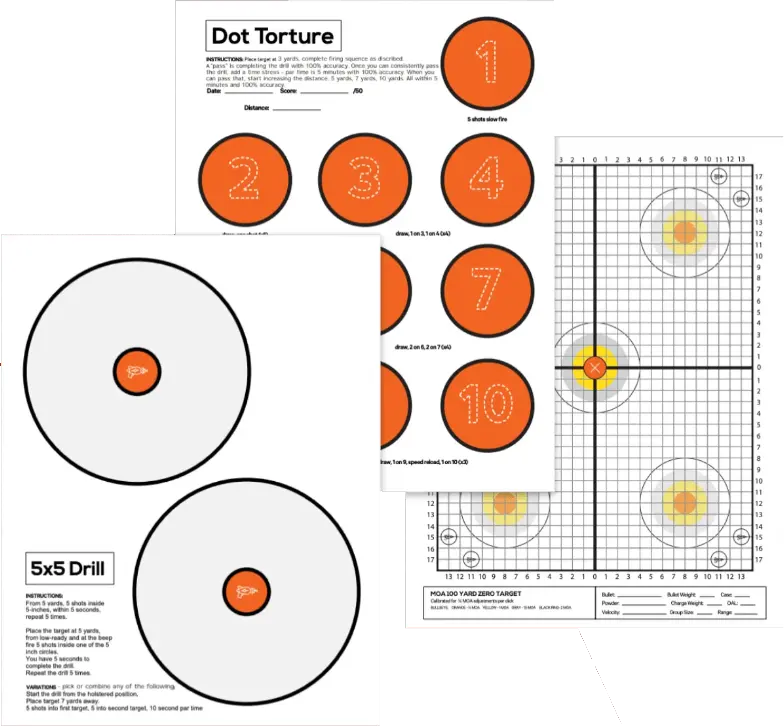
3 Leave a Reply
Yeah- I would say those are pretty decent but I would also throw the DEA pistol and carbine qual on there. Don't know if you have seen it or run either qual course but I've seen seasoned shooters get caught up in the movement, speed, and timing. Contact me, I am happy to expound.
You missed the FBI Pistol qual
I want to become a soldier. Am afraid but love the job. I've learnt alot